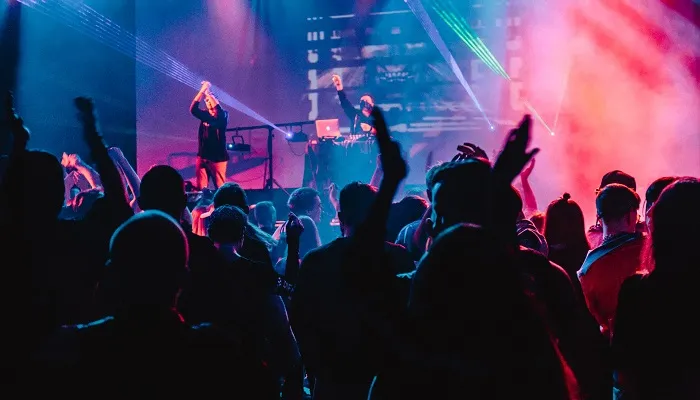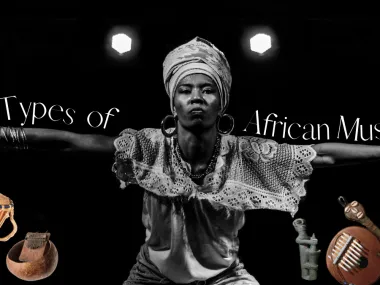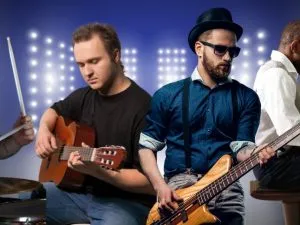Since the emergence of house music in 1980s Chicago, fans of the genre have created several subgenres under its name—with deep house being the most popular. But what is deep house, exactly, and how does it differ from regular house music?
Read on to know more about deep house music, including its history, types, and characteristics.
What Is Deep House Music?
Deep house is a subgenre of house music, a genre of electronic dance music (EDM).
Pioneered by Chicago producers Larry Heard and Marshall Jefferson, deep house contains elements of Chicago house with touches of soul music, 1980s jazz-funk, and garage house.
History of Deep House Music
The origins of deep house stemmed from Larry “Mr. Fingers” Heard’s 1985 song Mystery of Love, which has then inspired subsequent deep house songs.
Mystery of Love greatly stood out from other electronic dance music at the time, with some claiming that it sounded “truly extraterrestrial.” The track’s groovy, almost-otherworldly elegance, inspired other artists to challenge the rules of EDM and house music.
Apart from Mystery of Love, Derrick May’s 1987 single Strings of Life has also made a significant impact in the world of deep house music. Similar to Mystery of Love, Strings of Life used slower, jazzy sounds, with brilliant piano string breakdowns that many still use today.
According to Ron Trent, an American music DJ and record producer, the term “deep house” was initially used to describe the work of DJs Frankie Knuckles and Ron Hardy.
Both artists incorporated elements of jazz, disco, and underground music to their electronic house sound, which are all characteristics of deep house.
Deep house music eventually made its way to mainstream media when legendary clubs such as Club Shelter, Paradise Garage (NYC), and Warehouse (Chicago) started playing deep house music. To this day, the genre remains popular amongst house fans.
House vs. Deep House: What’s the Difference?
As mentioned earlier, deep house music is a subgenre of house music. Both began in Chicago’s underground clubs in the 1980s when DJs began altering disco songs to give them deeper basslines and a more mechanical beat.
To name a few, producers Frankie Knuckles, Ron Hardy, Larry Levan, Chip E, and Jesse Saunders pioneered the genre. Although it began in Chicago clubs (and later in the local radio scene), the genre quickly expanded internationally and became a worldwide phenomenon.
This genre has had a large impact on dance music and pop music. It was so big that artists such as Madonna, Janet Jackson, and Kylie Minogue began incorporating house music in some of their major songs.
Shortly after the huge success of house music, deep house was created. Artists wanted to expand on the genre and create music that’s more mature, sensuous, and stylish.
They found that they couldn’t achieve slower, liquid grooves with house music’s current characteristics. With several minor changes, the genre deep house was created.
The term “deep” described the deeply comfortable, hypnotic, and relaxing pulse of the genre. Some artists call it the Van Gogh of house music; intellectually stimulating, smooth, and brimming with metaphors of sex.
Characteristics of Deep House Music
Deep house music contains elements of regular house music and elements unique to its name. These are as follows:
Danceable Tempos
Compared to regular house music with its 120 to 130 beats per minute (bpm), deep house tempos typically range anywhere between 110 to 125 bpm, therefore creating a natural dance floor tempo.
Time Signature
Deep house music is played with a time signature of 4/4 and uses a drum pattern of four-on-the-floor quarter-note kick. This pattern isn’t unique to the deep house music genre, as it’s also found in progressive house, acid house, and tech-house.
Funk, Jazz, and Soul Influences
Deep house music often included “Very American” jazz samples or gospel-inspired vocals, which therefore produced gentler and more organic beats and melodies. It also emulated 1970s soul and funk music.
It’s softer and smoother than typical house music and less abrasive. The sound effects are subtle and more muted, with filtered delays and smooth reverbs. Lyrics are usually positive/uplifting, with vocals that have a pleasantly concentrated dissonant melody.
Despite sounding more organic, deep house music is still heavily synthesizer-based. More often than not, deep house features synth pads playing chords idiomatic to jazz—the seventh chords, ninth chords, and thirteenth chords.
Other influences of deep house music include:
- Chicago house
- Garage house (AKA New York house)
- Underground music
- Disco
Roland Synthesizers
Deep house music is known for its spacious use of percussion elements. This is primarily thanks to the help of Roland synthesizers and drum machines, particularly Juno-60 keyboard synths, Jupiter-6 keyboard synths, and the Roland TR-909 drum machine.
Notable Artists, Early Hits, and Record Labels
Apart from Larry Heard, who’s widely known as a pioneering figure in Chicago house music, there are numerous other notable artists and record labels in the deep house scene.
This includes Marshall Jefferson and his 1986 song Move Your Body, Kerri Chandler and his 1991 hit SuperLover/Get It Off, and albums such as Modernism: A New Decade and The Martyr Mantras by The Style Council and Jesus Loves You consecutively.
As for record labels, early deep house music was and still being represented by the following companies:
- Alleviated Records
- AFTR:HRS
- Anjunadeep
- Glasgow Underground
- Peacefrog Records
- Soma
- Source
- Spinnin’ Deep
- Suara
- Mother Recordings
Earlier deep house hits include the following:
- Ralphi Rosario – You Used To Hold Me (1993)
- Joe Smooth – Promised Land (1997)
- Nitro Deluxe – Brutal House (1986)
- Marshall Jefferson – Move Your Body (1986)
- Mr. Fingers – Can You Feel It? (1981)
- Raze – Break 4 love (1988)
Deep House Music Today
Deep house music still remains quite popular in today’s EDM scene. Even so, mislabeling or misusing occurs to a great majority of deep house music tracks.
For instance, Beatport, an American electronic online music store, had previously mislabeled deep house with future house because it lacked the genre within its database. Many deep house tracks on popular websites such as Spotify and YouTube are also falsely classified.
Mislabeling also happens with producers and DJs. Most DJs believed to belong in the deep house scene haven’t produced a single deep house track throughout their careers.
The genre is commonly mislabeled because it’s relatively difficult to classify. Even so, there are millions of dedicated deep house fans that perfectly know the genre’s characteristics.
Deep house mixes garner thousands, if not millions, of views every day. It’s inherently more popular than other types of house and dance music, primarily because it’s generally more musical and softer to the ears.
Most deep house music fans today describe the genre to be powerful, positive, uplifting, energetic, communicative, and relaxed. Due to this, deep house isn’t only enjoyed in clubs and bars, but also on the road, gym, and at home.
Types of Deep House Music
Deep house music has two known subgenres: future house and tropical house. Let’s take a look at the difference between the two:
Future House
Future house is a deep house subgenre that incorporates elements of UK garage music and most EDM genres. It’s a relatively new genre, emerging in the UK in 2010.
The genre was coined by DJ Tchami in 2013 to categorize its remix of Go Deep on SoundCloud. He didn’t expect the name to go viral, stating in a 2015 interview that the genre was meant to describe any kind of music that’s yet to be invented, thus the term “future.”
Future house is characterized by high-energy beats and big drops, typically in the 4/4 beat fashion. It’s also sonically bass-heavy.
Following Oliver Helden’s hit singles Gecko (Overdrive) and Last All Night (Koala), both of which were international chart successes in 2014, the genre was brought to the mainstream.
Shortly thereafter, artists such as Martin Solveig, Liam Payne, and GTA have incorporated future houses into their work.
Tropical House
Tropical house, or simply trop house, is a deep house subgenre that borrows elements from contemporary pop music, tropical music, dancehall, and Balearic house.
The term “tropical house” was coined by Thomas Jack as a joke but has since become popular among listeners as time went by. This is primarily thanks to popular artists such as Kygo, Matoma, Seeb, Gryffin, and Lost Frequencies.
Tropical house shouldn’t be confused with the genre trouse, as trouse is a completely different form of music.
Although established as a music genre in the mid to late 2000s, tropical house only began trending in 2013 with Klangkarussell’s Sun Don’t Shine.
When 2014 and 2015 came, producers like Felix Jaehn, Alex Adair, Bakermat, Klingande, and Sam Feldt began making big tropical house hits, further solidifying its status in the deep house subgenre.
Similar to deep house, tropical house uses synthesizer instrumentation and a typical drum pattern of 4/4. However, unlike regular deep house, tropical house is slower (100-115 bpm) and more relaxed. It also doesn’t use “big room” effects that are typically found in electro-house.










